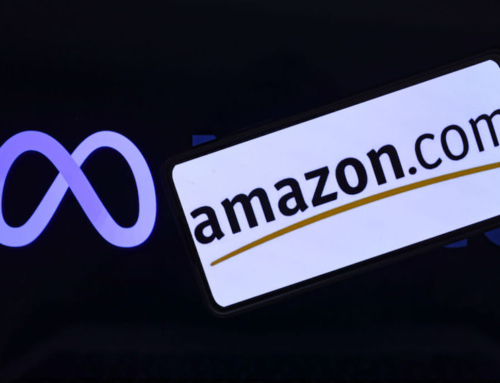A Brand Refresh is Essential In Today’s Market
In today’s rapidly evolving marketplace, adapting and staying relevant is crucial for any business. Consumers’ perceptions of content and advertisements have dramatically shifted over the past five years, influenced by technological advancements, changing social norms, and evolving consumer preferences. Many brands that once dominated their industries, such as Bed Bath & Beyond and Red Lobster, have faced significant challenges, including bankruptcy, due to their inability to modernize and refresh their brands. This highlights the importance of a brand refresh to remain competitive and appealing to modern consumers.
Understanding a Brand Refresh
A brand refresh involves updating and revitalizing a brand’s visual identity, messaging, and overall market presence to better align with current trends and consumer expectations. Unlike a complete rebrand, which often entails a total overhaul of a company’s identity, a brand refresh focuses on refining and modernizing existing elements to improve relevance and appeal. Key components of a brand refresh include:
- Updating the visual identity (logos, color schemes, and typography).
- Refreshing brand messaging.
- Enhancing the digital presence.
- Improving customer experience.
- Realigning brand values with contemporary issues and consumer priorities.
Signs Your Brand Needs a Refresh
Recognizing when your brand needs a refresh is the first step toward maintaining market relevance. Here are some common signs:
Stagnant Sales or Growth: If your sales metrics and market share have plateaued or declined, it may be an indication that your brand no longer resonates with consumers.
Outdated Visuals and Messaging: Outdated logos, color schemes, and slogans can make your brand appear irrelevant and disconnected from current trends.
Customer Feedback: Negative or lukewarm feedback and reviews can signal brand fatigue, indicating that consumers find your brand stale or unappealing.
Competitive Landscape: If your competitors are evolving and you are not, you risk falling behind in the market. Keeping up with industry trends is essential for maintaining competitive advantage.
Steps to Refresh Your Brand
Step 1: Conduct a Thorough Brand Audit
The first step in a brand refresh is to conduct a detailed audit of your existing brand assets and strategies. This includes analyzing your brand’s presence across all platforms and engagement metrics, effectively communicating its value proposition, and alignment with current market trends and consumer expectations. This audit should also extend to evaluating customer feedback and market perception to identify areas that require a pivot or enhancement.
Step 2: Revitalize Your Brand Strategy
Refreshing your brand strategy involves revisiting your brand’s core values, mission, and unique selling propositions to ensure they resonate with today’s consumers. It’s crucial to consider how shifts in consumer preferences and the competitive landscape have altered the efficacy of your current positioning. This may lead to redefining your target demographics or completely overhauling your brand’s mission statement to better align with current market dynamics.
Step 3: Redesign Your Visual Identity for Today’s Media Landscape
In a world dominated by visual content, refreshing your visual identity is vital. This involves updating your logo, typography, color palette, and overall design templates to ensure they work effectively across various media, including video and digital platforms. The new design should be versatile enough to stand out in both static images and dynamic video content.
Step 4: Enhance Your Brand Messaging
Adapting your brand messaging is critical to ensuring it captures the essence of what your brand stands for in a way that resonates with today’s audiences. This means refining the language, tone, and key messages to better suit modern communication channels, especially video. Crafting succinct yet impactful messages can significantly boost your brand’s presence in a crowded marketplace.
Step 5: Implement Across All Touchpoints
Consistency is vital in a brand refresh. The updated brand elements must be implemented uniformly across all touchpoints, including your website, social media, physical branding, customer service protocols, and internal communications. A unified brand experience strengthens brand recall and reinforces the updated brand identity.
Step 6: Launch and Promote Your Refreshed Brand
Launching your refreshed brand should be executed with a clear strategy that maximizes exposure and engagement. Introduce the refreshed brand using a mix of traditional and digital marketing channels. Particular attention should be given to leveraging video content, which can effectively showcase the revitalized brand elements and connect emotionally with the audience.
Step 7: Monitor, Measure, and Optimize
Post-launch, monitoring the impact of your refreshed brand and making adjustments as necessary is critical. Utilize analytics tools to track engagement, conversion rates, and overall brand sentiment. Regularly updating your strategies based on these insights will help maintain your brand’s relevance and vibrancy.
Examples of Brands That Failed to Refresh and Have Disappeared or Are Struggling
Several well-known brands have struggled to stay relevant in a rapidly evolving marketplace in recent years. Here are a few notable examples of brands that either failed to refresh themselves and disappeared or are currently in trouble:
Sears
Once a dominant force in American retail, Sears has been on a steady decline due to its inability to adapt to changing consumer preferences and the rise of e-commerce. Despite efforts to modernize, Sears has closed numerous stores and is on the brink of collapse, struggling to stay afloat in a highly competitive retail environment (Popular Brands).
Gap
The Gap, Inc., which owns several well-known clothing brands, including Banana Republic and Old Navy, has faced significant challenges. Gap’s image has been described as “lackluster,” and its clothing as “samey and boring,” leading to declining sales. The company has considered closing hundreds of its namesake stores as part of a broader restructuring effort to address its outdated brand perception (Moneywise).
Jell-O
Despite being an iconic brand, Jell-O has struggled to stay relevant in the current health, wellness, and convenience market. The brand’s association with outdated dessert trends has hindered its appeal to modern consumers, leading to a decline in its presence and sales (Moneywise).
Chevrolet Volt
General Motors discontinued the Chevrolet Volt, an electric car, and the gas-powered Chevrolet Cruze and Impala. The decision was driven by changing consumer preferences towards SUVs and crossovers, which significantly impacted the sales of these passenger cars (Moneywise).
Chef Boyardee
Chef Boyardee, a brand known for its canned pasta products, has faced declining sales as consumers shift towards fresher, healthier food options. Although efforts have been made to update the brand with higher-quality ingredients, the transition has been challenging and has not fully revitalized the brand’s market position (Moneywise).
SlimFast
SlimFast, once a leader in diet shakes and drink mixes, has seen a significant decline in popularity. The brand was sold for a fraction of its former value as consumers increasingly prefer fresh, low-carb foods over traditional diet products (Moneywise).
Fiat
Fiat’s small cars have struggled in the U.S. market, where consumer preference has shifted towards SUVs. Known for reliability issues and an uncomfortable ride, Fiat has seen month-over-month declines in sales, leading to its diminishing presence in the American market (Moneywise).
These examples illustrate the critical importance of continuously refreshing a brand to stay relevant in a dynamic market. Brands that fail to innovate and adapt risk losing their market share and ultimately disappearing.
Common Challenges to a Brand Refresh and How to Overcome Them
Resistance to Change: Stakeholders may resist change due to attachment to the current brand. Overcome this by clearly communicating the benefits and involving them in the refresh process.
Maintaining Brand Consistency: Ensuring cohesion across all brand touchpoints is crucial. Develop comprehensive brand guidelines to maintain consistency throughout the refresh.
Measuring Success: To evaluate effectiveness, track the impact of the brand refresh through KPIs such as sales growth, brand perception surveys, and customer engagement metrics.
How CrunchGrowth Can Facilitate Your Brand Refresh
CrunchGrowth specializes in guiding businesses through the complexities of a brand refresh. With our deep understanding of modern market dynamics and consumer behavior, we offer the following:
Strategic Insight: Our experts provide tailored strategies that align with your business objectives and the latest market trends.
Creative Excellence: From redesigning your visual identity to crafting compelling video content, our creative team ensures your brand stands out in a digital-first world.
Full-Spectrum Implementation: We manage the detailed execution of your brand refresh across all channels, ensuring consistency and cohesion.
Continuous Optimization: Leveraging cutting-edge analytics, CrunchGrowth continuously monitors the performance of your refreshed brand, optimizing strategies to maximize engagement and growth.
A brand refresh is a facelift and a strategic pivot that can redefine your business’s trajectory. With CrunchGrowth as your partner, you can navigate this transformation confidently, ensuring your brand remains dynamic and resonant in an ever-changing marketplace.












Leave A Comment